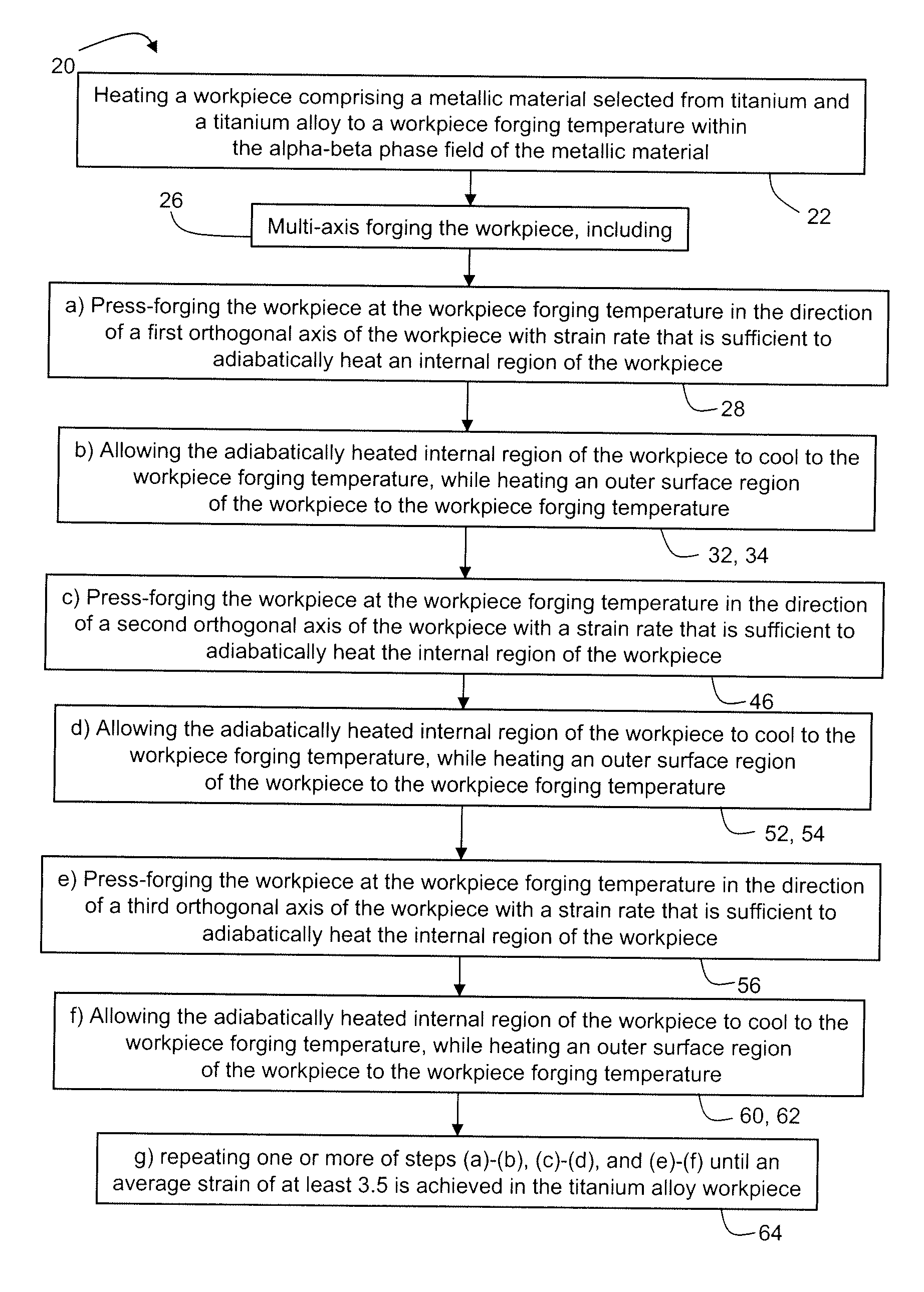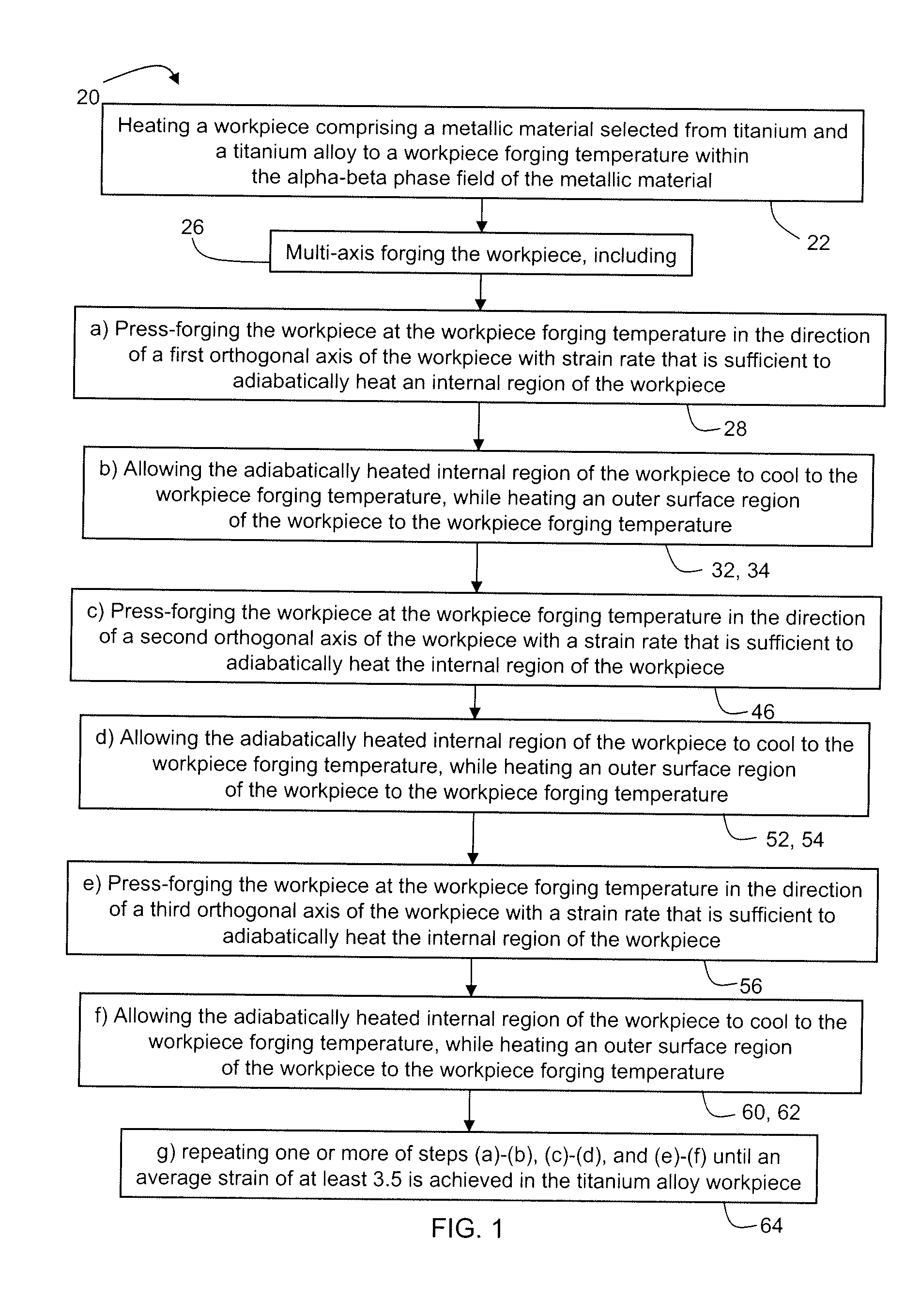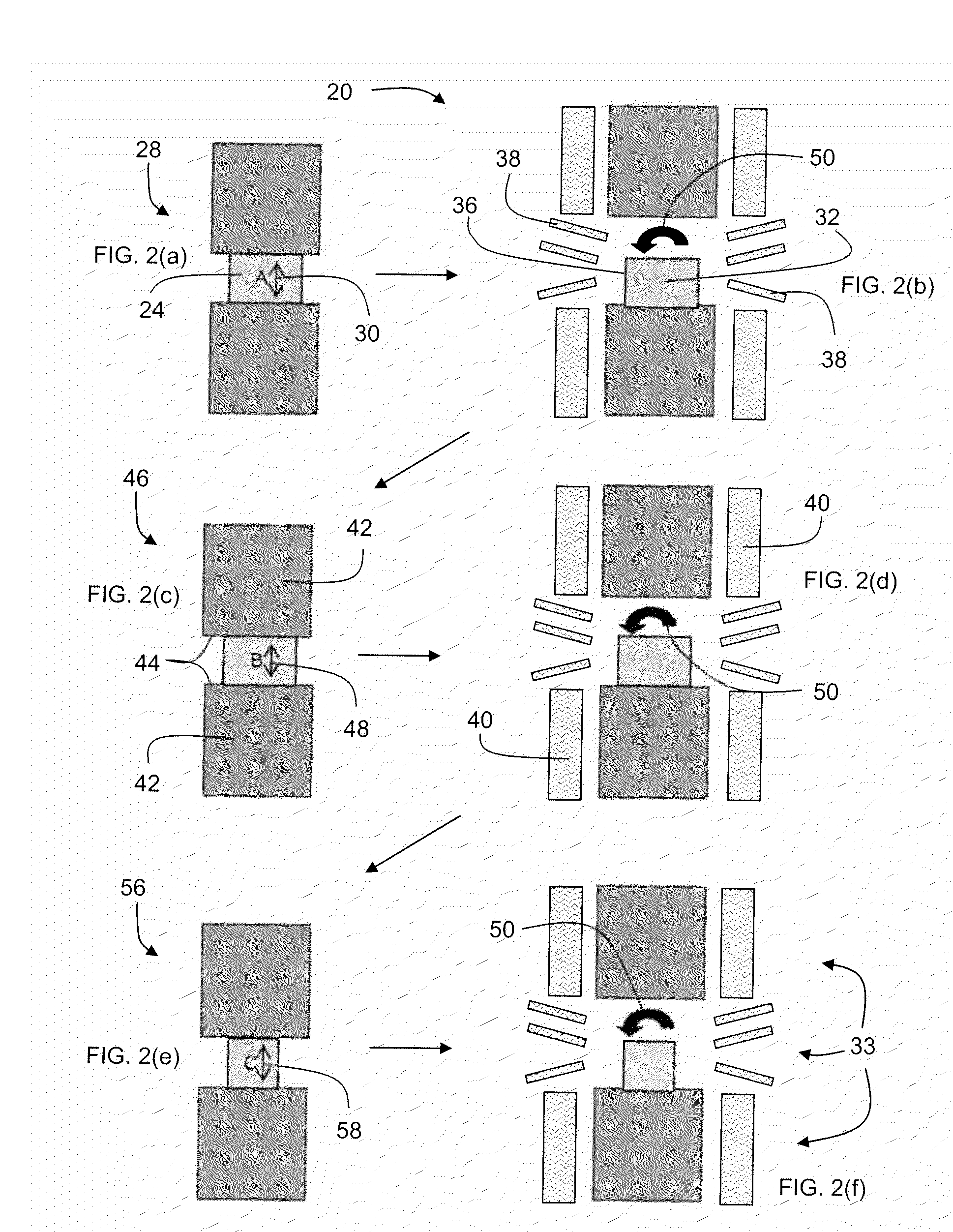Processing Routes for Titanium and Titanium Alloys
a technology of titanium alloys and processing routes, which is applied in the field of forging methods for titanium and titanium alloys, can solve the problems of excessive cumulative time taken to perform maf in a commercial setting, and the available open die press forging equipment may not have the capability to achieve ultra-slow strain rates
- Summary
- Abstract
- Description
- Claims
- Application Information
AI Technical Summary
Problems solved by technology
Method used
Image
Examples
example 1
[0110]Multi-axis forging using a thermal management system was performed on a titanium alloy workpiece consisting of alloy Ti-6-4 having equiaxed alpha grains with grain sizes in the range of 10-30 μm. A thermal management system was employed that included heated dies and flame heating to heat the surface region of the titanium alloy workpiece. The workpiece consisted of a 4-inch sided cube. The workpiece was heated in a gas-fired box furnace to a beta annealing temperature of 1940° F. (1060° C.), i.e., about 50° F. (27.8° C.) above the beta transus temperature. The beta anneal soaking time was 1 hour. The beta annealed workpiece was air cooled to room temperature, i.e., about 70° F. (21.1° C.).
[0111]The beta annealed workpiece was then heated in a gas-fired box furnace to the workpiece forging temperature of 1500° F. (815.6° C.), which is in the alpha+beta phase field of the alloy. The beta annealed workpiece was first press forged in the direction of the A axis of the workpiece to...
example 2
[0112]A sample of the starting material of Example 1 and a sample of the material as processed in Example 1 were metallographically prepared and the grain structures were microscopically observed. FIG. 10 is a micrograph of the beta annealed material of Example 1 showing equiaxed grains with grain sizes between 10-30 μm. FIG. 11 is a micrograph of a center region of the a-b-c forged sample of Example 1. The grain structure of FIG. 11 has equiaxed grain sizes on the order of 4 μm and would qualify as “very fine grain” (VFG) material. In the sample, the VFG sized grains were observed predominantly in the center of the sample. Grain sizes in the sample were larger as the distance from the center of the sample increased.
example 3
[0113]Finite element modeling was used to determine internal region cooling times required to cool the adiabatically heated internal region to a workpiece forging temperature. In the modeling, a 5 inch diameter by 7 inch long alpha-beta titanium alloy preform was virtually heated to a multi-axis forging temperature of 1500° F. (815.6° C.). The forging dies were simulated to be heated to 600° F. (315.6° C.). A ram speed was simulated at 1 inch / second, which corresponds to a strain rate 0.27 s−1. Different intervals for the internal region cooling times were input to determine an internal region cooling time required to cool the adiabatically heated internal region of the simulated workpiece to the workpiece forging temperature. From the plot of FIG. 10, it is seen that the modeling suggests that internal region cooling times of between 30 and 45 seconds could be used to cool the adiabatically heated internal region to a workpiece forging temperature of about 1500° F. (815.6° C.).
PUM
| Property | Measurement | Unit |
|---|---|---|
| beta transus temperature | aaaaa | aaaaa |
| time | aaaaa | aaaaa |
| transus temperature | aaaaa | aaaaa |
Abstract
Description
Claims
Application Information
 Login to View More
Login to View More - R&D
- Intellectual Property
- Life Sciences
- Materials
- Tech Scout
- Unparalleled Data Quality
- Higher Quality Content
- 60% Fewer Hallucinations
Browse by: Latest US Patents, China's latest patents, Technical Efficacy Thesaurus, Application Domain, Technology Topic, Popular Technical Reports.
© 2025 PatSnap. All rights reserved.Legal|Privacy policy|Modern Slavery Act Transparency Statement|Sitemap|About US| Contact US: help@patsnap.com



